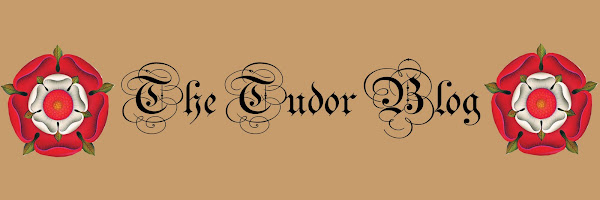
On October 24, 1537, Jane Seymour, third wife of King Henry VIII, died. She died of puerperal fever less than two weeks after the birth of Henry's long-awaited only son.
Jane Seymour was the daughter of Sir John Seymour of Wiltshire and Margery Wentworth. Through her maternal grandfather, she was a descendant of King Edward III of England and the Percy family. Because of this, she and King Henry VIII were fifth cousins three times removed. She was also second cousin to her predecessor, Anne Boleyn, sharing a great-grandmother, Elizabeth Cheney. Her exact birth date is debated; usually given as 1509 but it has been noted that at her funeral, 29 women walked in succession. Since it was customary for the attendant company to mark every year of the deceased's life in numbers, this implies she was born in 1508.
She was not as highly educated as King Henry's previous wives, Catherine of Aragon and Anne Boleyn. She could read and write a little but was much better at needlework and household management. Jane's needlework was reported to be beautiful and elaborate; some of her work survived up to 1652, when it is recorded to have been given to the Seymour family.
She became a maid-of-honour in 1532 to Queen Catherine, but Jane may have served Catherine as early as 1527. Ironically, Jane went on to serve Queen Anne Boleyn.
Jane Seymour was noted to be pale, blonde and had blue eyes. It is said that she also had a turkey neck, the exact opposite of Anne Boleyn's dark hair and olive skin (and personality). According to Imperial Ambassador Eustace Chapuys, Jane was of middling stature and very pale; he also commented that she was not of much beauty. However, John Russell stated that Jane was "the fairest of all the King's wives." Polydore Vergil commented that she was "a woman of the utmost charm in both character and appearance."
The first report of Henry VIII's interest in Jane Seymour was in February 1536.
King Henry VIII was betrothed to Jane on the May 20, 1536, ONE day after Anne Boleyn's execution, and married her ten days later. She was publicly proclaimed as queen consort on June 4. She was never crowned, due to a plague in London where the coronation was to take place. Henry was also reluctant to crown Jane before she had fulfilled her duty as a queen consort by bearing him a son and a male heir.
 In early 1537, Jane finally did just that. During her pregnancy, she developed a craving for quail, which Henry ordered for her from Calais and Flanders. She went into confinement in September 1537 and in October she gave birth to the coveted male heir, the future King Edward VI of England on October 12, 1537 at Hampton Court Palace.
In early 1537, Jane finally did just that. During her pregnancy, she developed a craving for quail, which Henry ordered for her from Calais and Flanders. She went into confinement in September 1537 and in October she gave birth to the coveted male heir, the future King Edward VI of England on October 12, 1537 at Hampton Court Palace.After the christening, it had become clear that Jane Seymour was seriously ill. Her labor had been difficult, lasting two days and three nights, probably because the baby was not well positioned. Rumours circulated that she died following an emergency Caesarean section, after Henry ordered the baby to be cut from her to prevent a stillbirth, but caesarean births on live mothers were not possible at that time.
According to Edward's biographer, Jennifer Loach, Jane Seymour's death may have been due to an infection from a retained placenta. According to Allison Weir, death could have also been caused by puerperal fever due to a bacterial infection contracted during the birth or a tear in her perineum which became infected.
Jane Seymour died at Hampton Court.







